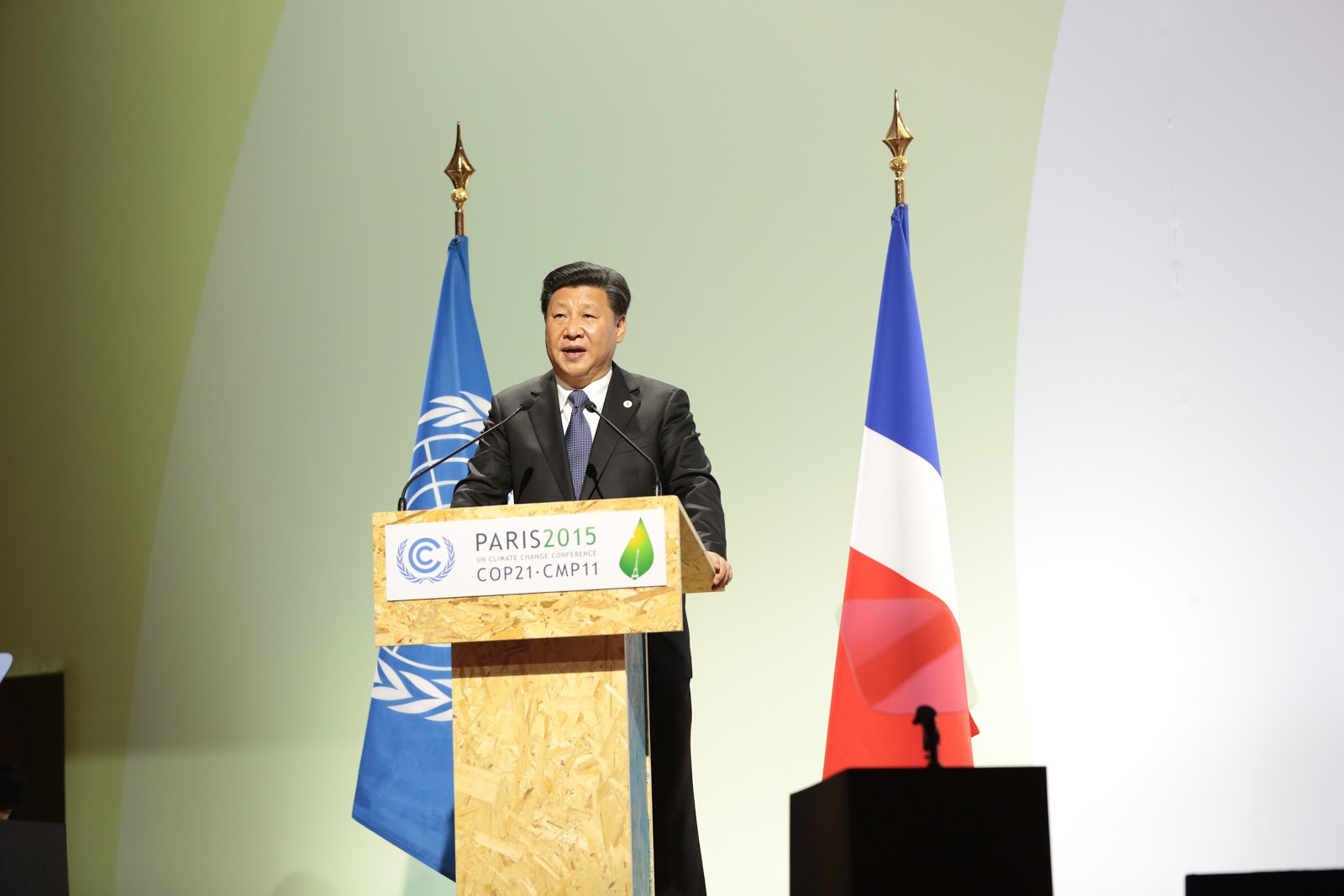
Part 3 of a series: Revisiting the Paris Agreement
[hr]
By Eric Margolis
[divider]
[dropcap]T[/dropcap]he news coming out of the world’s largest emitter is looking good. With headlines like “It Didn’t Take China Long to Fill America’s Shoes on Climate Change” and “China Reaffirms Strong Commitment to the Paris Agreement” popping up in the mainstream news and social media alike, everything seems peachy. That is, until you learn that China alone emits as much as the US and Europe combined. And until you learn that even best-case scenarios for climate action in China don’t have CO2 emissions peaking until 2035.
China is a key to solving climate change because it may pave the path to viable, sustainable, climate-conscious development for nations worldwide. Not only is China the world’s biggest emitter facing the largest economic growth, but it also holds a unique position as a politically powerful developing nation. China’s successful adaptation to climate change could present a model for other developing nations, especially in Asia. So if China can conquer the sustainable development hurdle with regard to the climate, then any developing country can.
The circumstances of rapid economic growth and development in China mean that there are also a lot of possible ways to reduce emissions that seem to be low-hanging fruit. In 2015, over 70% of electricity generated in homes in China came from coal-powered plants. Coal is a disastrously costly, inefficient, and dangerous fossil fuel; even a relatively inexpensive switch to natural gas would emit 50% less GHGs than coal-fired plants do. The sheer number of vehicles on the roads means that a simple fuel efficiency regulation on cars suspended the production of over 500 models. These are simple policy measures, with major repercussions. The potential for China to curtail rising emission is certainly there. Can it be achieved?
Climate Tracker Action has this to say about China’s NDCs and climate policy:
- In spite of all the low-hanging fruit, Chinese emissions won’t decrease significantly anytime soon
- China has good CO2 policy but lacks policy for other GHGs like CH4 and N2O
- China is currently on track to meet its 2020 carbon and fossil fuel targets— but their current NDCs are insufficient to meet the global goal of limiting warming to 2 degrees Celsius
Taking everything into consideration, Climate Tracker Action grades China’s policy as “Highly Insufficient” for achieving the goals of the Paris Agreement. The Chinese government does have a strong track record of robust policy, but the efforts nevertheless remain inadequate due to the sheer size of the country, emitters, and economy. Efforts at policy implementation, including setting regulations for methane emissions, increasing forest coverage, and boosting the country’s share of renewable energy, are faced with the all-too steep hurdle of the world’s current climate crisis. Sure, it’s better than the US withdrawing from the agreement entirely, but it’s simply not enough to meet the objectives of the Paris Agreement.
There are a few curious kernels of hope and danger in the mix.
Take, for example, studies that show that China has contributed to worsening environmental conditions in unstable developing nations through trade (not to take away the joint responsibility of European nations and the US for also causing similar, if not more destructive, environmental conditions). China’s massive trade deals with African countries, influencing mining and energy development, the resulting environmental conditions, as well as broader government policy through bribery and corruption, mean that China has an outsized influence in the African continent. Chinese directive can therefore influence the economies and emissions of more than a few countries.
China is starting to do what Western nations have done for a long time—emit carbon in developing nations instead of your own. It saves money and shifts the burden of emissions elsewhere. China outsourcing its GHGs could have serious ripple effects around the world, making it harder for other developing nations to curtail their own emissions. It also creates an illusion of false progress where, while China will be able to more easily achieve its own NDCs, the global situation remains no better off.
That doesn’t sound all that hopeful, does it?
This is the kernel of hope: China is publicly committed to climate leadership. If this desire to serve as a world-leader on the issue of climate can manifest itself on the level of international trade, the ripple effects could be equally positive. Many Western countries try to negotiate environmental regulations when they make deals with developing nations; China may start doing the same. I will be the first to state that there is no evidence China plans to implement these sorts of trade deals. But the fact remains that precisely because China has an outsized influence on emissions in 2018, it also has an outsized ability to reduce them. Not just within China, but worldwide, through leadership and economic influence. The Chinese Communist Party, Chinese environmental activists, and global negotiations all play a role. From an American perspective, the best that we can do is to vote officials into office that will create a more robust climate policy, not only for our own good, but also to challenge China for climate leadership and spur the world’s largest country into global action.
China’s robust policy blows the US’s out of the water. Chinese action just may enable it to take over the mantle of global leadership abandoned by the US last summer. Whether the world will benefit or suffer as a result remains to be seen.
[hr]
Eric is a senior in Davenport College. You can contact him at eric.margolis@yale.edu.